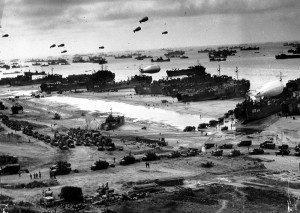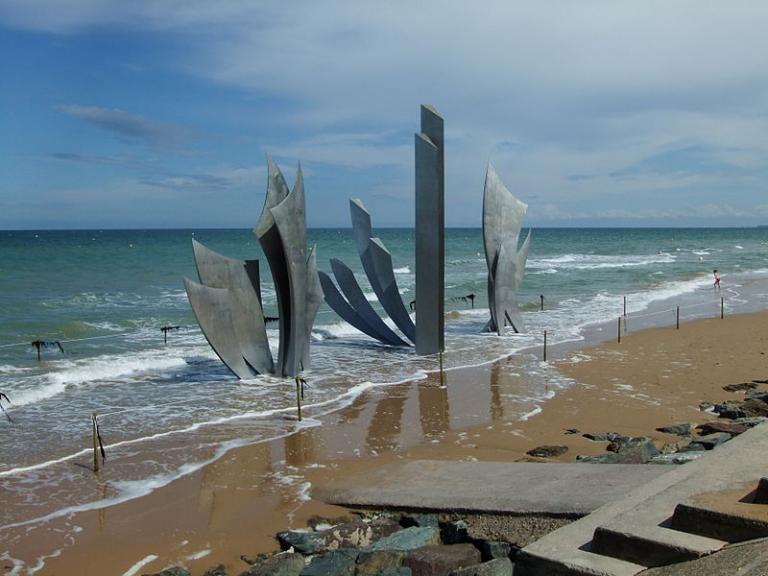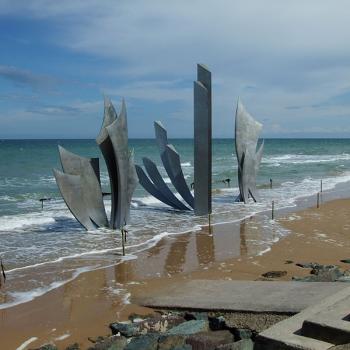
Start with Ronald Reagan’s “Boys of Pointe du Hoc” speech, at Real Clear Politics today.
But then read Stephen A. Ambrose’s D-Day. (Yes, I know, there’s the plagiarism issue, and maybe there are other, better D-Day books, but when I read this one it was a page-turner, so it wins high marks for the prose.)
We think of D-Day as a near-suicide mission, which succeeded only due to the extraordinary courage, and sheer number, of American soldiers. And yes, the very idea of running towards machine-gun fire I find hard to comprehend (though, to be sure, Ambrose describes the sea-sickness that made the landing craft seem less of a refuge than you might think). But what’s lost is this: at Omaha Beach, due to winds and tide, the units landed in unplanned locations, and companies were split up and had to, in some fashion, re-form. Intelligence was faulty and there were more German troops, and the troops were more highly trained, than expected, and the pre-landing bombardment failed to soften up the targets.
But Omaha Beach was the exception. Utah, Gold, Juno, and Sword saw significantly fewer casualties as the battle went much more according to plan. I’m writing this from memory or I’d give more details (and maybe next year I’ll plan ahead), but the key point I want to make is this: D-Day is a testament to bravery and courage, yes, but also to all the men (and women, as applicable) who fought, and worked diligently to plan the operation, to train the men, to manufacture staggering amounts of materiel, and the spies and double-agents who convinced Rommel that the main attack was at Calais.
The image, by the way, is from Wikimedia Commons, and in the public domain. The caption there is this:
Normandy Invasion, June 1944. Landing ships putting cargo ashore on one of the invasion beaches, at low tide during the first days of the operation, June 1944. Among identifiable ships present are USS LST‑532 (in the center of the view); USS LST‑262 (third LST from right); USS LST‑310 (second LST from right); USS LST‑533 (partially visible at far right); and USS LST‑524. Note the barrage balloons overhead and Army “half-track” convoy forming up on the beach.
Ambrose features this image in his book, so I was glad to find it online because I simply find it amazing to see the ships as far as the eye can see. He captions it more simply:
the end of the day at Omaha Beach. American men and equipment coming ashore in staggering numbers. One pilot thought, as he looked down at the scene, that Hitler must have been mad to think he could beat the United States.
And if you want to see an LST in person, head up to Muskegon, Michigan.












